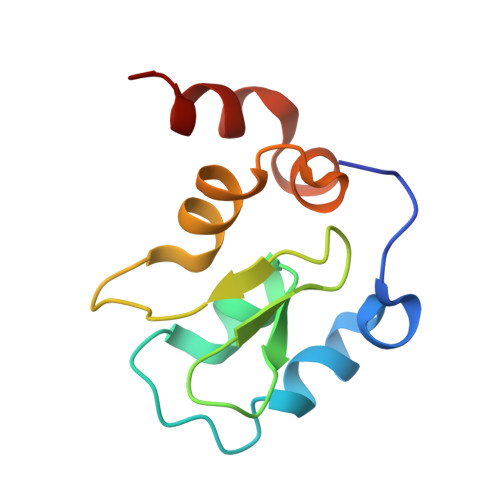Antagonism of c-IAP and XIAP proteins is required for efficient induction of cell death by small-molecule IAP antagonists.
Ndubaku, C., Varfolomeev, E., Wang, L., Zobel, K., Lau, K., Elliott, L.O., Maurer, B., Fedorova, A.V., Dynek, J.N., Koehler, M., Hymowitz, S.G., Tsui, V., Deshayes, K., Fairbrother, W.J., Flygare, J.A., Vucic, D.(2009) ACS Chem Biol 4: 557-566
- PubMed: 19492850
- DOI: https://doi.org/10.1021/cb900083m
- Primary Citation of Related Structures:
3HL5 - PubMed Abstract:
The inhibitor of apoptosis (IAP) proteins are critical regulators of cancer cell survival, which makes them attractive targets for therapeutic intervention in cancers. Herein, we describe the structure-based design of IAP antagonists with high affinities and selectivity (>2000-fold) for c-IAP1 over XIAP and their functional characterization as activators of apoptosis in tumor cells. Although capable of inducing cell death and preventing clonogenic survival, c-IAP-selective antagonists are significantly less potent in promoting apoptosis when compared to pan-selective compounds. However, both pan-IAP- and c-IAP-selective antagonists stimulate c-IAP1 and c-IAP2 degradation and activation of NF-kappaB pathways with comparable potencies. Therefore, although compounds that specifically target c-IAP1 and c-IAP2 are capable of inducing apoptosis, antagonism of the c-IAP proteins and XIAP is required for efficient induction of cancer cell death by IAP antagonists.
- Departments of Medicinal Chemistry and Protein Engineering, Genentech, Inc., South San Francisco, CA 94080, USA.
Organizational Affiliation:


















